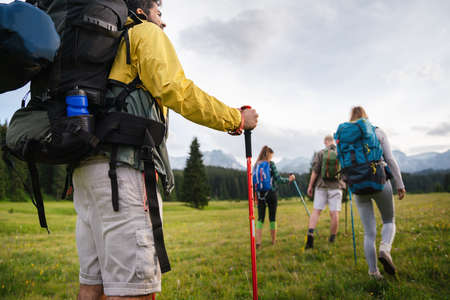1. Base Layers for All-Season Comfort
When it comes to camping, your base layers are your first line of defense against unpredictable weather. Whether youre trekking through the heat of summer or braving chilly winter nights, having the right base layer can make or break your outdoor experience. The key is choosing materials that help regulate body temperature while keeping you dry and comfortable.
Why Base Layers Matter
Base layers sit closest to your skin and work by managing moisture and maintaining warmth. In hot conditions, they wick sweat away to keep you dry and prevent chafing. In cold climates, they trap heat to keep you warm while still allowing your skin to breathe.
Top Features to Look For:
- Moisture-wicking: Helps pull sweat away from your body.
- Breathability: Allows air to circulate and keeps you cool.
- Thermal insulation: Keeps you warm in cold environments.
- Quick-drying: Ideal for rainy days or after washing on-the-go.
- Lightweight and packable: Easy to store in your backpack without taking up space.
Recommended Materials
| Material | Best For | Main Benefits |
|---|---|---|
| Merino Wool | All seasons | Naturally odor-resistant, warm when wet, soft on skin |
| Synthetic (e.g., Polyester blends) | Sweaty summer hikes | Durable, quick-drying, budget-friendly |
| Bamboo Fabric | Mild climates | Sustainable, breathable, moisture-wicking |
Packing Tips for Base Layers
- Packing for Summer: Bring at least two lightweight moisture-wicking tops and one pair of breathable leggings or shorts as your base set.
- Packing for Winter: Include thermal long-sleeve tops and bottoms—preferably merino wool—for added insulation under your outerwear.
- Packing for Shoulder Seasons: Layering is key. Mix lightweight synthetics with midweight wool options so you can adjust as temps shift throughout the day.
Your base layers arent just underwear—theyre performance gear designed to keep you dry in the summer heat and cozy in the winter chill. Investing in quality pieces tailored for year-round use will make every camping trip more comfortable, no matter what Mother Nature throws your way.
2. Essential Outerwear for Variable Weather
When youre out camping, weather can change in an instant—sunny mornings can turn into rainy afternoons or chilly nights. Thats why having the right outerwear is key to staying comfortable and safe. From insulated jackets to lightweight rain shells, the right layers protect you from wind, rain, and even snow without weighing down your pack.
Choosing the Right Outer Layers
Whether youre hiking through a misty forest or setting up camp in a windy valley, outerwear should be both functional and adaptable. Heres what to look for:
- Waterproofing: Look for jackets with waterproof or water-resistant materials like Gore-Tex or DWR-coated fabrics.
- Insulation: Down or synthetic insulation helps retain body heat during cold nights or alpine adventures.
- Breathability: Breathable fabrics prevent sweat buildup when youre active on the trail.
- Packability: Lightweight and compressible outerwear saves space in your backpack.
Top Outerwear Picks by Season
| Season | Recommended Outerwear | Key Features |
|---|---|---|
| Spring | Lightweight Rain Jacket | Waterproof, breathable, wind-resistant |
| Summer (High Elevation) | Windbreaker Shell | Packs small, protects from wind chill |
| Fall | Insulated Puffy Jacket | Synthetic fill for warmth even when wet |
| Winter | Down Parka or Heavy Insulated Coat | Maximum warmth, snow and wind protection |
Don’t Forget Layering Compatibility
Your outerwear should work well with your base and mid-layers. Make sure it’s roomy enough to fit over fleece or thermal tops but snug enough to trap heat efficiently. Adjustable hoods, cuffs, and hems also help seal out the elements.
Pro Tip:
If youre unsure about the weather, pack a lightweight shell just in case. It adds minimal weight but can make a big difference if clouds roll in unexpectedly.

3. Footwear Built for the Trail
When youre heading out into the wild, your feet are doing most of the work—so its crucial to gear them up properly. Whether youre trekking through muddy forest paths, crossing streams, or hiking up rocky hillsides, having the right footwear makes all the difference. From waterproof hiking boots to cozy insulating socks, lets break down what you need to keep your feet comfortable and protected in every season.
Hiking Boots: Your All-Terrain Companion
A good pair of hiking boots is a game-changer for any camper. Look for boots that offer ankle support, strong grip soles, and durable materials like leather or synthetic blends. Waterproof features are also key when dealing with wet conditions. Choose insulated options for winter trips to keep your toes warm even in snow-covered trails.
Key Features to Look For:
| Feature | Why It Matters |
|---|---|
| Waterproofing | Keeps your feet dry during rain or stream crossings |
| Ankle Support | Helps prevent injuries on uneven terrain |
| Traction Soles | Provides grip on slippery or rugged surfaces |
| Insulation | Essential for cold-weather camping and snowy hikes |
| Breathability | Reduces sweat buildup during warmer months |
Waterproof Shoes: For Wet and Muddy Adventures
If youre not planning intense hikes but still want foot protection from wet environments, waterproof trail shoes are a great alternative. Theyre lighter than boots but still offer solid traction and water resistance—perfect for casual campers who explore around their site or take short day hikes.
Socks Matter More Than You Think
Dont underestimate the power of a good pair of socks. Cotton socks might be fine at home, but out in nature, they hold moisture and can lead to blisters. Instead, go for wool or synthetic materials that wick moisture and provide cushioning. In winter, thick merino wool socks offer excellent insulation without sacrificing breathability.
Recommended Sock Types by Season:
| Season | Sock Type | Description |
|---|---|---|
| Spring/Fall | Mid-weight wool blend | Keeps feet warm in cool temps while managing moisture |
| Summer | Synthetic lightweight crew socks | Breathable and quick-drying for hot weather hikes |
| Winter | Thick merino wool socks | Maximum warmth and comfort for freezing conditions |
Pro Tip:
Always break in new hiking boots before heading out on a trip. Wear them around town or on short walks to avoid painful blisters on the trail.
The right footwear combo—boots, shoes, and socks—can mean the difference between an epic adventure and a miserable outing. Make sure your feet are ready for whatever nature throws your way.
4. Seasonal Accessories You Shouldn’t Forget
When youre out camping, the little things can make a big difference—especially when it comes to staying warm, dry, and protected in changing weather. No matter the season, having the right accessories on hand is just as important as your base layers or outerwear. Heres a look at some essential seasonal accessories that every camper should pack.
Stay Comfortable Year-Round
Whether youre braving winter snow or enjoying a summer breeze in the mountains, these accessories help regulate your body temperature and protect you from the elements. They’re lightweight, easy to pack, and incredibly functional.
Must-Have Accessories by Season
| Season | Essential Accessories | Why You Need Them |
|---|---|---|
| Winter | Insulated gloves, beanie, balaclava, thermal socks | Keeps extremities warm and prevents frostbite in freezing temps |
| Spring | Lightweight gloves, waterproof hat, neck gaiter | Protects against unpredictable rain and lingering chill |
| Summer | Wide-brim hat, UV-protective buff, moisture-wicking headband | Shields from sun exposure and helps with sweat management |
| Fall | Knit cap, fleece gloves, neck warmer | Adds warmth as temps drop without overheating during hikes |
Quick Tips for Choosing the Right Accessories:
- Layer smart: Choose breathable materials like merino wool or synthetic fabrics that wick moisture.
- Pack extras: Wet gloves or socks can ruin your day—always bring backups.
- Go multifunctional: Items like neck gaiters can double as hats or face covers when needed.
- Think compact: Look for gear that compresses easily to save space in your backpack.
Staying prepared with these versatile accessories ensures youre ready for whatever nature throws your way—from sudden downpours to chilly evenings around the campfire. Don’t overlook them when packing your camping clothing essentials!
5. Camping Clothes That Transition from Trail to Campfire
When youre out camping, packing smart is key. You want clothing that doesn’t just perform on the trail but also keeps you cozy when youre back at the campsite. That’s where versatile pieces come in—they save space in your pack and work hard all day long. Think fleece pullovers that keep you warm during chilly hikes and still feel great when youre sitting by the fire, or flannel shirts that look good and layer well.
Why Versatile Clothing Matters
Choosing clothing that can handle both activity and relaxation means fewer items to carry and more comfort throughout the day. Whether youre hiking, cooking dinner at camp, or hanging out with friends, these clothes adapt to changing temps and situations.
Top Versatile Clothing Items
| Item | Why Its Great | Best Season |
|---|---|---|
| Fleece Pullover | Lightweight warmth, quick-drying, perfect for layering | Fall, Winter, Spring |
| Flannel Shirt | Soft, breathable, stylish enough for campfire photos | Fall, Early Spring |
| Convertible Pants | Zips into shorts, durable fabric for trails and lounging | Spring, Summer, Fall |
| Insulated Vest | Keeps core warm without overheating; easy to pack | All Seasons (layered) |
| Base Layer Top (Moisture-Wicking) | Keeps sweat off your skin while staying comfy around camp | All Seasons |
Pro Tip:
Stick with neutral or earth-tone colors like olive green, gray, or tan. They hide dirt better and match easily with other layers.
The best camping clothes are the ones that do double duty. By choosing pieces that transition smoothly from outdoor adventures to fireside relaxing, you’ll stay comfortable without overpacking.


